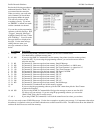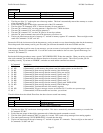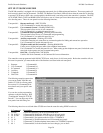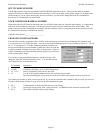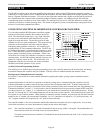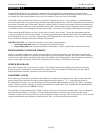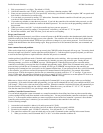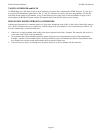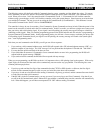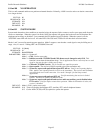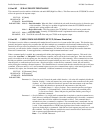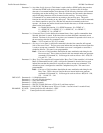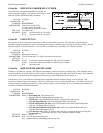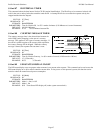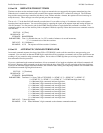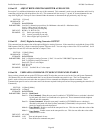
Pacific Research Solutions RI-300e User Manual
Page 42
SECTION 12 SYSTEM COMMANDS
The following section will detail each of the S-Commands showing syntax, examples, and the default data values. To execute
an S-Command, you must first “unlock” the controller with the current password. When “unlocked”, user commands will not
work. When you are done, “lock” the controller with S-Command 69 0 or 60 1. S-Command 69 0 will lock the controller
without saving system changes, and 69 1 will lock the controller, saving the system changes. Some items are saved at the time
you send the S-Command. The rest are saved on exiting the S-Command mode (S-Command 69 1). This difference is noted
with each S-Command in the “SAVE” field as “RAM/EEPROM”.
The controller is always in one of two modes, (User Command or System Command) and never in both. When the power is first
turned on, the controller is locked and in the User command mode. In this User mode, you will hear a single tone courtesy each
time you un-key with a full quieting signal. If your signal is not full quieting, the courtesy message will change to a dual tone
(indicating a weak signal). After you send the programming password, the RI-300 unlocks and will switch to a programming or
System Command (S-Command) mode. In this programming mode, you will hear a 2-tone courtesy each time you un-key with
a full quieting signal. Remember that if your signal is not full quieting, the courtesy message will sound a dual (weak signal)
tone – even in programming mode.
Each time you send commands to the RI-300, you will get one of four responses.
1. If you send any valid command without errors, the RI-300 will respond with a CW acknowledgment message “OK”, or a
function complete of your design. The “OK” message is of low pitch and has the rhythm of “dah dah dah dah di dah”.
2. You may hear the speech read-back of the data you sent.
3. If you send either an erroneous S-Command or a user command that has an error in its programming, the RI-300 will
respond with the speech message “ERROR”.
4. If you send an invalid command, the RI-300 will not respond with any message.
When you are programming your RI-300 over the air, it is important to have a full quieting signal to the repeater. With a noisy
signal, digits can be missed and the result of the command may not turn out the way you planned. The following lists some
common problems people have:
• If you key up and send the first digit of the command before the CTCSS or DCS decodes a valid tone, the first digit is
missed, and the command becomes invalid or worse yet, looks like some other valid command.
• If you move in and out of an RF null while sending a command, a digit may get missed, and the command becomes invalid
or looks like some other valid command.
• If the RI-300 is in the S-Command mode, you may get errors if you are trying to send User Commands. Note that if you
are still in the S-Command mode after 5 minutes have past without a command being sent, the controller will automatically
lock. When this happens, you will hear an unexpected CW “OK” without sending a command.



